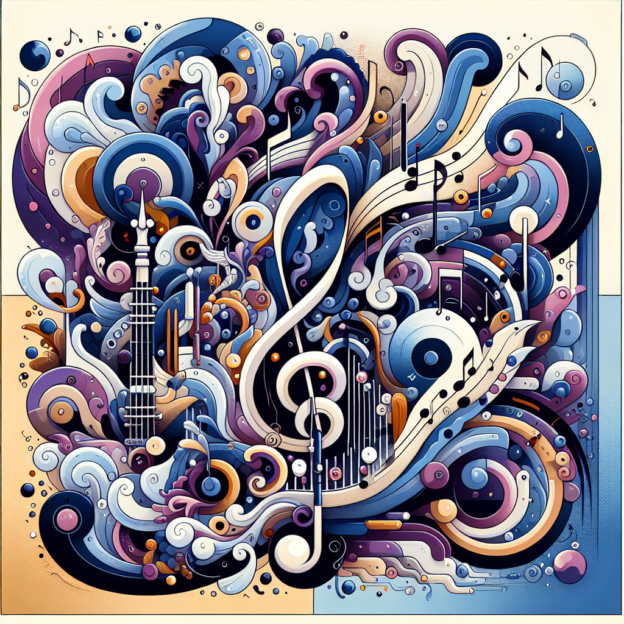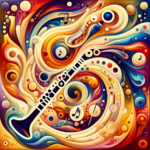The E Mixolydian scale is more than just a series of notes; it's a vibrant chapter in the story of clarinet music. Rooted in classical traditions, this scale has become an integral part of many genres, including jazz, folk, and modern music. In the clarinet repertoire, it has shaped the work of both composers and performers in unique and fascinating ways.

Clarinet Fingering Charts are always FREE at MartinFreres.net!
What Makes E Mixolydian Special?
The E Mixolydian scale consists of the notes E, F?, G?, A, B, C?, and D. Its distinctive feature is the flat seventh note compared to the major scale, creating a unique sound. This characteristic opens up a wide range of musical expressions and lends itself beautifully to improvisation.
As clarinetists, we're always on the lookout for fresh ideas and new sounds. The E Mixolydian scale offers plenty of exciting possibilities! Imagine starting a phrase with the root ‘E', smoothly moving up to G?, and then resolving sweetly to A. This creates a tension that begs for resolution, making your music more engaging.
| Scale Degree | Note | Interval from Root |
|---|---|---|
| 1 | E | Root |
| 2 | F? | Major 2nd |
| 3 | G? | Major 3rd |
| 4 | A | Perfect 4th |
| 5 | B | Perfect 5th |
| 6 | C? | Major 6th |
| 7 | D | Minor 7th |
Jazz and Beyond
The E Mixolydian scale really shines in jazz standards. Legendary clarinetists like Benny Goodman and Sidney Bechet explored its potential, using it to create those soulful blue notes that bring life to otherwise simple progressions.
Historical Significance
The E Mixolydian scale has a rich history dating back to the Baroque period. Many composers, including Bach, incorporated mixolydian elements in their works, showcasing its lively character. Today's clarinetists can draw inspiration from this legacy, blending the scale's nostalgic feel with modern improvisation techniques. It's an exciting way to connect past and present!
Folk Traditions
Beyond classical music, the E Mixolydian scale has made its mark in folk traditions, especially in Eastern European music. Its memorable melodies allow clarinetists to express a range of emotions, from joyful celebration to deep melancholy. If you've ever played in a small folk ensemble, you know the magic that happens when everyone comes together using this scale!
Rhythmic Possibilities
Combining the E Mixolydian scale with various rhythmic patterns adds depth to our performances. Whether you're playing syncopated rhythms or straight eighths, this scale fits seamlessly with different time signatures and styles, making it incredibly versatile.
Exploring the Scale
Ready to explore the E Mixolydian scale in your clarinet playing? Try this: take familiar melodies and reimagine them using this scale. You'll be amazed at how easily you can transform a simple tune, creating something fresh and exciting for your audience.
Instrument Care
Don't forget about clarinet maintenance! A well-maintained instrument is crucial for expressing the subtle nuances of the E Mixolydian scale. Regular check-ups ensure your clarinet's rich timbre and dynamic range shine through, allowing your playing to fully capture the scale's character.
Contemporary Applications
Today, artists across various genres are embracing the E Mixolydian scale, demonstrating its wide appeal. Modern composers incorporate it into contemporary classical pieces and film scores, highlighting its emotional range and depth. As clarinetists, when we use this scale, we're participating in a living tradition that bridges classical roots with modern expression.
Conclusion
While we've only scratched the surface of the E Mixolydian scale's historical significance, this overview sets the stage for further exploration. As you continue your clarinet journey, incorporating this scale will enhance your technique and enrich your musical expression. So grab your clarinet, start experimenting with the E Mixolydian scale, and enjoy the musical adventures that await!
Table of Contents
- What Makes E Mixolydian Special?
- Jazz and Beyond
- Historical Significance
- Folk Traditions
- Rhythmic Possibilities
- Exploring the Scale
- Instrument Care
- Contemporary Applications
- Conclusion








